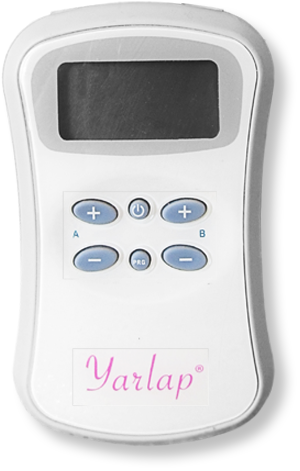intimacy, orgasm, Uncategorized
We Rarely Think About THESE Muscles. Or How to Effectively Strengthen Them.
The pelvic floor muscles. They are like the handy man of the lower half of our body, performing a variety of jobs on a moment’s notice and sometimes doing a couple jobs at once.
We rarely think of these muscles, though.
Well. We rarely think of them until they negatively impact things like sex and going to the bathroom. Maybe we start to think about them then. But not in the same way we think of what our abs feel like after 100 crunches. (Bad example. I have no idea what abs feel like after 100 crunches.)
In all seriousness, there’s a lot going on with a woman’s pelvic floor muscles.
The pelvic floor muscles have a few key jobs. They are the muscles that assist in holding abdominal organs in place. They also contract when we have an orgasm. And the degree to which we can control them affects whether or not we are continent.
Why on earth am I blogging about this?
As a sex blogger (and basically as a woman), I am well familiar with Kegel exercises — the intentional contracting and relaxing of the muscles that control urine flow. And I know that contracting my pelvic floor muscles during intercourse feels sensational for my husband. And for me, too. Not gonna lie.
The fact that so many women have heard of Kegel exercises and do them (and sometimes struggle knowing if they are doing them correctly) reveals that pelvic floor health is a relevant issue.
What generally affects the strength of the pelvic floor muscles?
The culprits are usually not too hard to identify.
Aging, injury, various health conditions, and poor health management all contribute to weakening muscle tone in our bodies, including the muscles in the pelvic floor.
Oh and, of course, the babies — those little heathens sugarplums who start out in a small space and then get so claustrophobic they want to skip rent and get the heck out of Dodge through a doorway that is no bigger than when they moved in months earlier.
And probably less known is that high-performance athletes may also experience incontinence.
Suffice to say, there is a lot going on with the pelvic floor muscles.
When it comes to incontinence, that of course is no fun and it certainly can cause huge inhibition for women (in all areas of life, including sexual intimacy). Incontinence generally is categorized into three categories — urge incontinence, stress incontinence or a combination of those two. Sometimes incontinence is treated with medications.
Even if incontinence is not a struggle, weakened pelvic floor muscles still can have a negative impact on sexual intimacy. Stands to reason that strengthened pelvic floor muscles can have a positive impact beneath the sheets.
Many women have great success with Kegel exercises, but many women also wonder if they are doing them correctly and/or don’t have as much success strengthening the pelvic floor muscles as they would like.
What besides Kegels can help strengthen the pelvic floor muscles?

Out of curiosity, I started looking into devices (sometimes called Kegel trainers) that are available to strengthen these muscles.
There are a few devices on the market, but I was particularly drawn to the Yarlap device. I had a great conversation with company representatives. They are passionate about this product and have definitely done their homework.
Brent Reider developed the Yarlap, which is a neuromuscular electrical stimulator. (Hang in here with me, because I know this sounds complicated.) It is a portable device with nothing permanently implanted. You don’t need a prescription for it.
It’s primary purpose is treatment of incontinence. The possible added benefit of better sexual satisfaction because of better toned pelvic floor muscles is more of a side benefit rather than the primary goal. Just wanted to be clear on that. And certainly it is not a sexual aid or sexual toy.
How does it work?
A vaginal electrode is connected to a hand-held control unit that then sends a low-level electrical stimulation to the muscle. This stimulation (kind of like a little shock) causes the pelvic muscle to contract and then relax. You use a lubricating gel on the vaginal electrode. This lubrication not only makes the electrode easy to insert, but also is crucial to how it functions.
There are various pre-set programs you can choose on the control unit, which takes the guess work out of wondering if you are working the muscle correctly. The control unit is about the size of an iPhone 5 (or a flip phone, if we really want to date ourselves). The vaginal electrode is about 2 1/2 inches long. It is designed to strengthen the pelvic floor muscles in 2-12 weeks with recommended use.
I know. Sounds complicated, right? It did to me too, so I decided I wanted to try it.
Keep in mind that it is not designed to be a quick fix. It’s not something you use once and voila, incontinence is fixed. But if you are someone in particular who suffers from incontinence, I encourage you to do your own research and see if it would be a product worth trying.
I don’t suffer from incontinence, but I wanted to at least understand the device, try it on myself and grasp the concept of how it works.
It took me some trial and error to get it at the right angle, but once I figured it out, I did feel the sensation of the muscle contracting and then relaxing. I totally understand what this device is doing and how it strengthens the pelvic floor muscles. Better toned pelvic floor muscles are good for continence. And good for sex.
In my opinion, the huge pro of this product is that it helps someone strengthen their pelvic floor muscles without medication or surgery. I’m not knocking medication and surgery per se, but if something less invasive can produce similar results, then isn’t that worth exploring?
The con for some people is going to be the price and the fact that you have to set aside at least some time to actually use it. You have to be intentional. But if I were someone really struggling with incontinence, these hurdles would be ones worth hurdling. Plus the company gives a 60-day guarantee. So there’s that. They stand behind what they have developed.
For some of you reading this, you have never heard of such devices. I was in that camp too, which explains my curiosity (and my great conversation with the company representatives).
If you are even a bit curious about the device and its impact on pelvic floor health, then check it out for yourself. Don’t take my word for it, but rather dig in yourself and determine if the Yarlap is right for you.
I have an affiliate relationship with the company, which simply means that if you decide you want to try the Yarlap and you purchase it through this link, I will receive a percentage of the sale. That’s not why I’m telling you about the product. I’m just an ethical person who likes to be up front and honest.
AND you can save $25 by using the promo code JULIE at checkout. Woohoo!
The Yarlap site is full of great information, FAQs, testimonials and product details, so I encourage you to check it out and see what more you can learn about pelvic floor muscles and how to keep them strong! They are, after all, like the handy man of the lower half of our body, performing a variety of jobs to keep the pelvic floor healthy!
Copyright 2018, Julie Sibert. Intimacy in Marriage Blog. Links may be monetized.
Never want to miss one of my posts? Subscribe via email on this page. And be sure to join my more than 9,000 followers on my Facebook page and 10,000 followers on Twitter.


My understanding is that the PC muscles and pelvic floor muscles are two different things (though you could make the case that the PC muscles are a part of the pelvic floor muscles). Poor PC muscles can lead to incontinence. Poor pelvic floor muscles have more to do with prolapse of the bladder and uterus into the vagina wall. Do you know if this would help with the later?
Hi @Lori Byerly, my friend! Great question in your comment. I’m going to follow up with the developer of the device to see what answer they give and will comment back here again. I think the PC muscle is one part of the pelvic floor, and I believe this device is working the PC muscle. Let me see what I can find out, though.
Canwe ask an anonymous question?